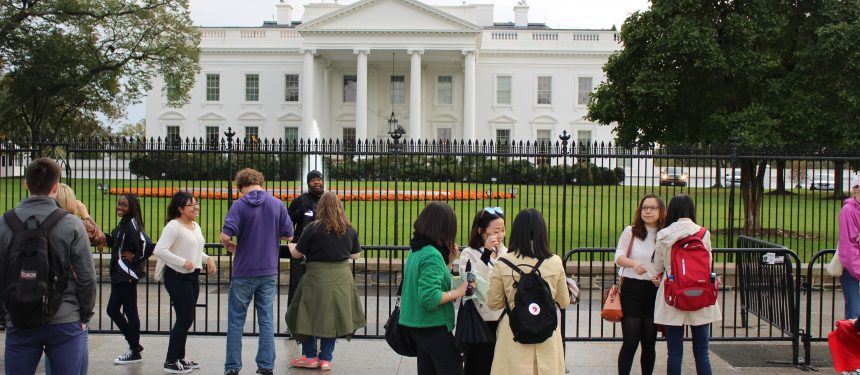Higher education institutions in the US hosted a record-breaking 1.08 million international students in 2016/17, according to a new Open Doors report. This marks the second consecutive year of the US hosting 1 million + international students – but a decline in new enrolments was also revealed.
News and business analysis for Professionals in International Education
Have some pie!
US hosts record high 1.08 million international students
 The top places of origin for international students studying in the US were China, India, South Korea, Saudi Arabia, Canada, Vietnam, Taiwan, Japan, Mexico, and Brazil.
The top places of origin for international students studying in the US were China, India, South Korea, Saudi Arabia, Canada, Vietnam, Taiwan, Japan, Mexico, and Brazil. According to the report published by IIE and the US Department of State Bureau of Educational and Cultural Affairs, the new findings signal a slowing of growth, with an overall increase of just 3% compared to increases of 7-to-10% for the previous three years.
Much of the increase reported for the past couple of years can be attributed to more students pursuing Optional Practical Training (OPT) related to their academic fields after their degree studies, and thus remaining longer in the higher education system.
India is a hugely important country for US educators with the largest growth recorded in students from India: for the third year in a row. India and China now represent approximately 50% of the total enrolment of international students in the US.
The number of new international students enrolled at a US institution for the first time in autumn 2016 declined by nearly 10,000 students to 291,000 – a 3% decrease from the previous year.
This is the first time that these numbers have declined in the twelve years that Open Doors has reported this data point.
Moreover, in a separate survey that IIE conducted with nine other education associations in September and October, an average decrease of 7% in the number of new enrolled students was predicted by nearly 500 colleges and universities for the 2017/18 academic year.
“45% of responding campuses reporting declines in new enrolments, 31% reported increases in new enrolments”
IIE President and CEO Allan Goodman said it is critical for US institutions to set strategic goals and be proactive in reaching out to students in a wide range of countries in the coming year.
“Countries and multinational employers around the world are competing to attract top talent.
“As more countries become active hosts of international students and implement national strategies to attract them, the competition for top global talent in higher education and the workforce will only intensify,” he added.
The top places of origin for international students studying in the US were China, India, South Korea, Saudi Arabia, Canada, Vietnam, Taiwan, Japan, Mexico, and Brazil.
The scaling back of large Saudi and Brazil government scholarship programs were said to be a significant factor in a flattening of growth, as the number of students from those two countries showed the biggest decreases at all levels, including non-degree study.
Other factors driving the decline in new enrolments were reported to include a mix of global and local economic conditions and expanded higher education opportunities in students’ home countries.
International students have regularly been shown to benefit US communities and HEIs economically and otherwise.
In 2016, the US Department of Commerce reported that international students brought $39 billion to the US economy through their spending on tuition, board and living expenses.
International students brought $39 billion to the US economy
In addition, international students’ roles on campus as teaching and research assistants support the faculty in many departments, particularly in STEM fields and their diverse perspectives help enrich classroom learning for US students.
Of the 500 or so HEIs that reported continued flattening in enrolments in 2017/18, there were fluctuations in these figures, with 45% of responding campuses reporting declines in new enrolments, 31% reported increases in new enrolments and 24% reported no change from last year.
Commenting on the reasons behind the decline in new enrolments, IIE head of research, policy, and practice Rajika Bhandari said there needs to be a greater focus on the “push factors” of countries that students are coming from.
“The cost of education in the US is now rising to such levels that people are beginning to look for alternative places”
“It’s all about global competition; what other countries are doing and whether that is more attractive to students when compared the cost of US education,” said Bhandari.
“The fact is that students can complete shorter degrees in Europe – which is a consideration for many in terms of cost saving – and there are now more opportunities in students’ home countries as well.”
Goodman added: “With respect to cost factors, US higher education has always been costly and foreign families have always saved a great deal of money for to pay for it.
“But the cost of education in the US is now rising to such levels that people are beginning to look for alternative places [to study], and that’s something to watch very closely in the future.”
Read the full report here.
Still looking? Find by category:


